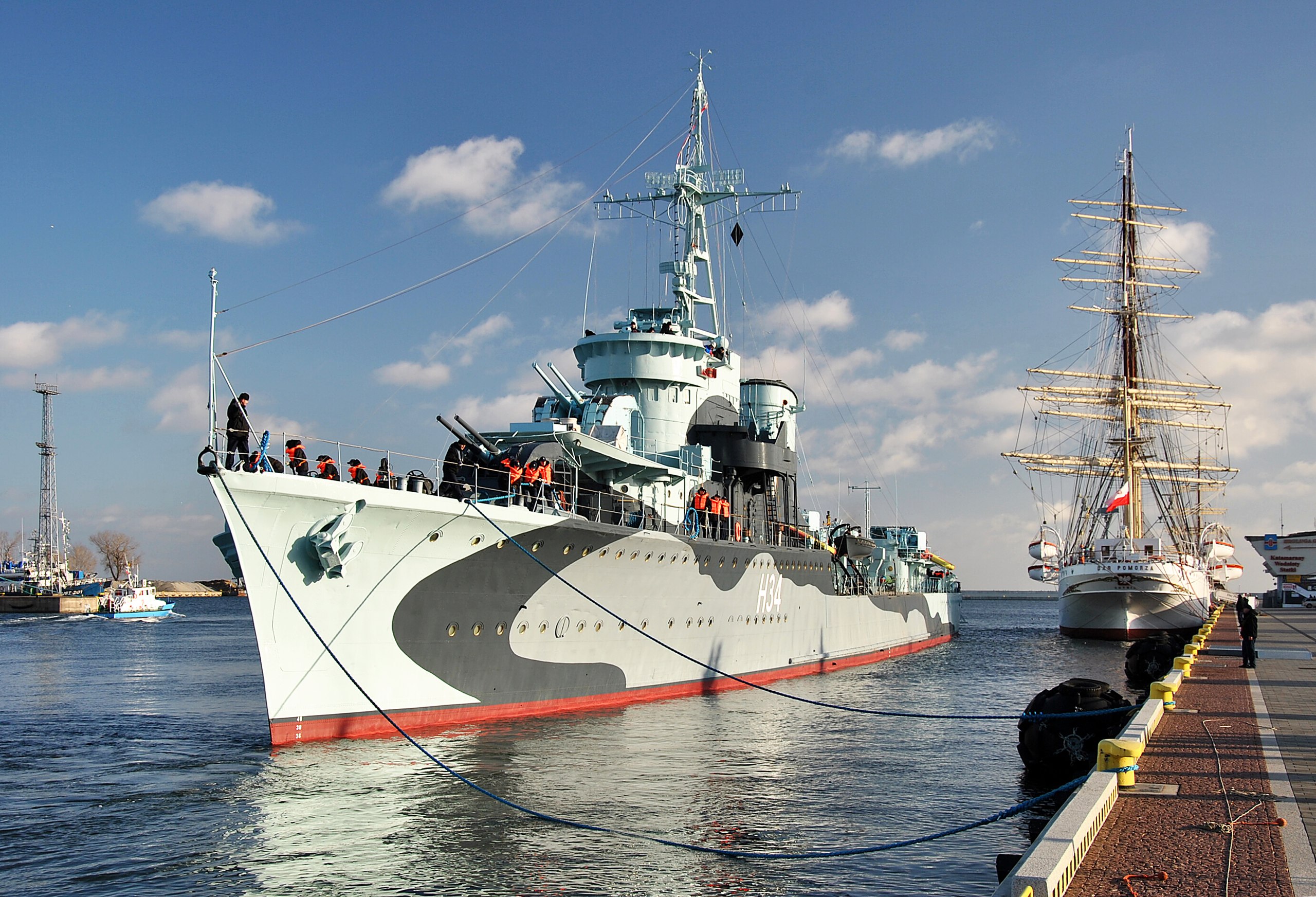In Poland, unlike the UK, November 11 is not a day of remembrance in the way that Brits would understand it. It’s a celebration marking the anniversary of independence after more than a century of Russian, Prussian and Austro-Hungarian partition and rule. That’s understandable; the British notion of remembrance is rooted in armistice, which came when Poland still didn’t formally exist. Nevertheless, Sail Ho has strong connections to both countries, and while we’re both fairly well-versed in the exploits of the Royal Navy during the Second World War, we wanted to mark this date by exploring the less well-known Polish naval contribution to the defeat of Hitler’s Germany.
In September 1939, a Nazi German warship on a “courtesy visit” attacked Poland, at Westerplatte, near Gdańsk. It was the start of a massive onslaught from air, land and sea, engulfing the whole Polish territory. Although Poland as a country never formally surrendered to the invaders, the troops at Westerplatte did so seven days later. They didn’t have much choice in the matter; cut off from potential reinforcements and supply lines, they stood their ground until they had fired their last bullets, and only laid down their weapons and raised their hands when there was no more ammunition to fight with.
That story will be familiar to Brits and Poles alike. But what became of the Polish Navy and seamen, a force that this reborn Central European state had been building since independence?
Although the new Poland’s leader Józef Piłsudski had announced the formation of a navy by November 28 1918, the Poles hadn’t had a great deal of time (or money) to become a major sea power by the outbreak of fresh hostilities in 1939. Compared with the Royal Navy, which was still the world’s biggest in September 1939, the Polish maritime forces amounted to very little. And they would have been no match for the Kriegsmarine – the Nazi German Navy. Thus, at the end of the summer of 1939, when it was clear to all that the storm clouds gathering over Europe were about to break, the Polish and British governments were making contingency plans. One was Operation Peking, which would see key assets of the Polish Navy transferred to UK waters.
At 1415 on August 29, the destroyers Burza (Storm), Błyskawica (Lightning) and Grom (Thunder) left their bases in the Baltic. By 1737 on September 1, just hours after the invasion of Poland had begun, they were moored in Edinburgh and ready to serve. Other Polish naval vessels, which were not evacuated, were lost very early in the war.
Similar to the Polish air crews who fought alongside the RAF in the Battle of Britain and other engagements, Burza, Błyskawica and Grom, together with their crews, served with the Royal Navy during the Second World War – although under Polish command.
The story doesn’t end there, though. The Royal Navy might still have been the most powerful sea force in the world at the start of the war, but there was a shortage of seaman able to crew vessels. In addition, the British had been rather slow off the mark in industrialising their military strength, so could afford to waste nothing. That’s how the Polish Navy ended up in command of several British vessels (Hunter class, Danae class, M class, N class and U class) during the course of the war. One of these, christened HMS Nerissa but renamed ORP Piorun (Thunderbolt) when it was handed to the Poles, even took part in the hunting down of Nazi Germany’s infamous battleship Bismark.
The 28 vessels that ultimately came under Polish command during the war included destroyers, cruisers, escort vessels, submarines, and different types of mine layers. Five were sunk, one was lost at sea, and three were impounded by Axis forces. In those years, 450 of the 4,000 Polish seamen who served on board those vessels were killed in action. Of the Polish Merchant Navy, which also cooperated with Allied forces, 18 vessels were sunk and at least 200 souls were lost.
Among all those other men and women of all nations who have died in war, we will remember them on November 11.
Pictured: Błyskawica, which has been restored and is now moored permanently in Gdynia, as a museum (information via the link in English).
